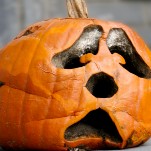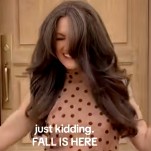This Post About Daylight Savings Time Is Longer Than Us Weekly’s Post About Daylight Savings Time
LatestOn Tuesday, October 25, 2016, the US-based entertainment website Us Weekly published a story called “When Is Daylight Savings Time 2016?” After seeing a tweet promoting the story appear in my Twitter feed (I’ve followed Us Weekly on the social platform for some time), I clicked the post and learned two important things:
- Us Weekly thinks we’re approaching the beginning of daylight savings time, when we are in fact approaching its end.
- Us Weekly used 261 words to write about the beginning of daylight savings time, not knowing that it was actually writing about the beginning of Standard Time.
The story began with an introduction to the concept of daylight savings time (again, they meant to talk about standard time), and a playful acknowledgment that the yearly clock-change can be confusing to many of the hundreds of millions of people it affects each and every year. (Including Us Weekly, which I covered above.)
Get ready to fall back — and have a sunnier morning commute! Daylight Savings Time 2016 is quickly approaching, which means it’s that confusing time of year again when everyone scrambles to remember whether they have to turn their clocks forward or backward.
It isn’t until the next paragraph that Us Weekly decides to make the big reveal (again, they confused daylight savings time with standard time) writing:
This year, the clocks fall back an hour on Sunday, November 6, meaning everyone gets a much-needed extra 60 minutes of sleep when 2 a.m. becomes 1 a.m.
In a smart move (not to mention a helpful one), the post then answers a follow-up question before their readers even have time to ask!
-

-

-

-

-

-

-

-

-

-

-

-

-

-

-

-

-

-

-

-

-

-

-

-

-

-

-

-

-

-

-

-

-

-

-

-

-

-

-

-








































